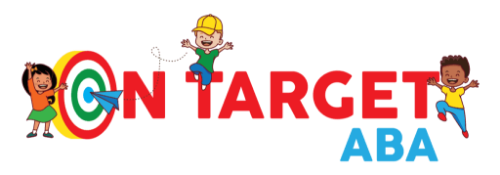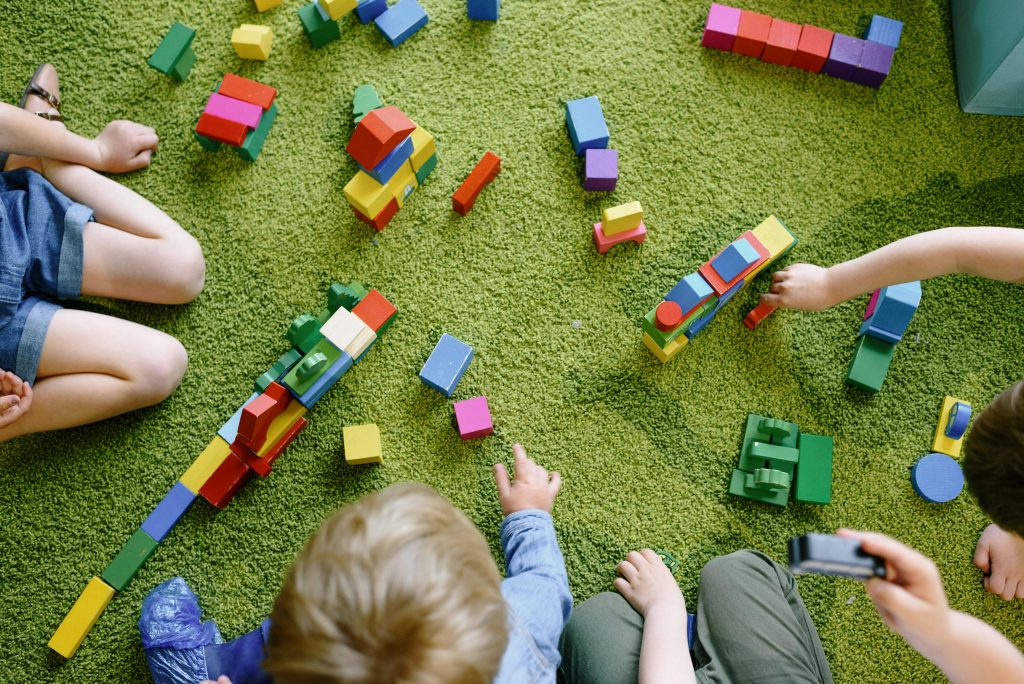🧠 AI Summary:
Play isn’t just fun — it’s one of the most powerful ways children learn. In this blog, we explore how play in ABA therapy helps children with autism develop communication, social, and problem-solving skills. You’ll learn how playful learning leads to real progress, why it’s central to ABA programs, and how parents can encourage learning through play at home.
Play Is the Heart of Learning
When most people hear the word “therapy,” they imagine structure, worksheets, and repetition. But at On Target ABA, therapy often begins with something much simpler — play.
Play is the language of children. It’s how they explore, connect, and understand the world around them. That’s why play in ABA therapy is not just an activity — it’s the foundation for learning communication, problem-solving, and social interaction skills.
As Autism Speaks explains, ABA works best when it’s engaging and fun, helping children learn naturally through positive experiences.
When a child laughs while stacking blocks, smiles during a puzzle, or makes eye contact while playing tag — those moments are therapy in action.
What Is Play in ABA Therapy?
Play in ABA therapy is a purposeful, structured way of using games and fun activities to teach important skills. It’s based on the understanding that children learn best when they’re happy and engaged.
Therapists use different types of play depending on each child’s age, abilities, and goals. These can include:
- Functional play: Using toys correctly (rolling cars, stacking blocks)
- Pretend play: Acting out scenarios (playing kitchen, feeding dolls)
- Social play: Taking turns or sharing with peers
- Sensory play: Engaging with textures, sounds, or movement
Each play activity is carefully designed to build real-world skills like language, patience, imitation, and social awareness.
At On Target ABA, every session includes joyful interaction — because progress happens fastest when children feel safe, understood, and excited to learn.
The Science Behind Learning Through Play
The power of play in ABA therapy lies in motivation. When children enjoy an activity, they’re more willing to participate, repeat actions, and stay focused.
ABA therapists use positive reinforcement — praise, high-fives, or access to favorite toys — to encourage desired behaviors during play. Over time, children associate learning with fun and success.
For example:
- A child who loves bubbles might practice saying “pop!” to request them.
- A child who enjoys toy cars might learn colors or counting while racing.
- A child playing pretend kitchen might practice following directions (“Stir the soup!”).
Play helps bridge the gap between structured therapy and everyday life, turning learning into something children want to do.
The CDC notes that play-based learning encourages children with autism to develop social, language, and emotional regulation skills through natural engagement.
How Play Supports Communication
Many children with autism struggle to express their needs or emotions. Play in ABA therapy provides a safe, enjoyable way to practice communication — with less pressure and more fun.
Therapists use play to teach:
- Requesting (“manding”) — asking for toys, snacks, or activities
- Labeling (“tacting”) — naming objects, colors, and people
- Conversation skills — taking turns talking during games
- Nonverbal communication — gestures, eye contact, and facial expressions
Even something as simple as rolling a ball back and forth teaches turn-taking and anticipation — both essential building blocks for communication.
At On Target ABA, we’ve seen countless children say their first words during playtime. 💙
Play Builds Social and Emotional Skills
In group ABA sessions, play helps children practice social rules in a natural, supportive setting.
Games like “Simon Says,” “Duck, Duck, Goose,” or board games teach children how to:
- Wait their turn
- Follow directions
- Celebrate others’ successes
- Handle losing gracefully
These experiences build emotional resilience and empathy — skills that reach far beyond the therapy room.
When a child learns to laugh with a peer, comfort a friend, or invite someone to play, those are milestones worth celebrating.
The Therapist’s Role in Play
Play in ABA therapy looks spontaneous, but it’s carefully guided. Therapists use specific strategies to make sure every moment supports learning.
Here’s what you might notice during your child’s session:
✅ The therapist follows your child’s lead — joining play rather than directing it.
✅ They introduce small challenges (“Let’s build it higher!”) to stretch new skills.
✅ Reinforcement happens naturally — laughter, praise, and fun become rewards.
This approach is called Natural Environment Teaching (NET) — teaching in real-life, meaningful contexts. It helps children learn how to use new skills anywhere — home, school, or playground.
The Power of Sensory Play
For many children with autism, sensory experiences are a big part of daily life. Play involving textures, movement, and sound helps children regulate their emotions and develop focus.
Examples of sensory play used in ABA therapy include:
- Playing with shaving cream or kinetic sand
- Jumping on trampolines or balance beams
- Water play with cups and funnels
- Music and rhythm games
These activities can help reduce anxiety, increase attention, and make learning more enjoyable.
Research shows that combining sensory and behavioral approaches can improve engagement and overall therapy outcomes for children with autism.
How Parents Can Encourage Play at Home
Parents play a huge role in extending what children learn in therapy. You can encourage learning through play at home by:
💙 Setting aside daily “play time” — even 10 minutes of focused interaction makes a difference.
💙 Following your child’s lead — play with what they enjoy most.
💙 Narrating actions (“You’re rolling the car!” “Let’s build a tower!”) to boost language skills.
💙 Using everyday routines (cooking, cleaning, dressing) as opportunities for playful learning.
Remember — play doesn’t have to look like therapy. It just has to be joyful and connected.
The Long-Term Benefits of Play-Based ABA
When therapy feels like play, children learn faster and retain skills longer. Over time, this approach helps them:
- Develop stronger emotional control
- Improve problem-solving abilities
- Feel confident in new environments
- Build lasting relationships
Play nurtures creativity and curiosity — two lifelong tools for independence and happiness.
Why On Target ABA Believes in Joyful Learning
At On Target ABA, play is at the center of everything we do. We believe therapy should feel safe, motivating, and full of laughter.
Our centers in:
…offer structured, play-based learning environments where every milestone — no matter how small — is celebrated.
Because at the heart of every great therapy session is joy. 🌈

